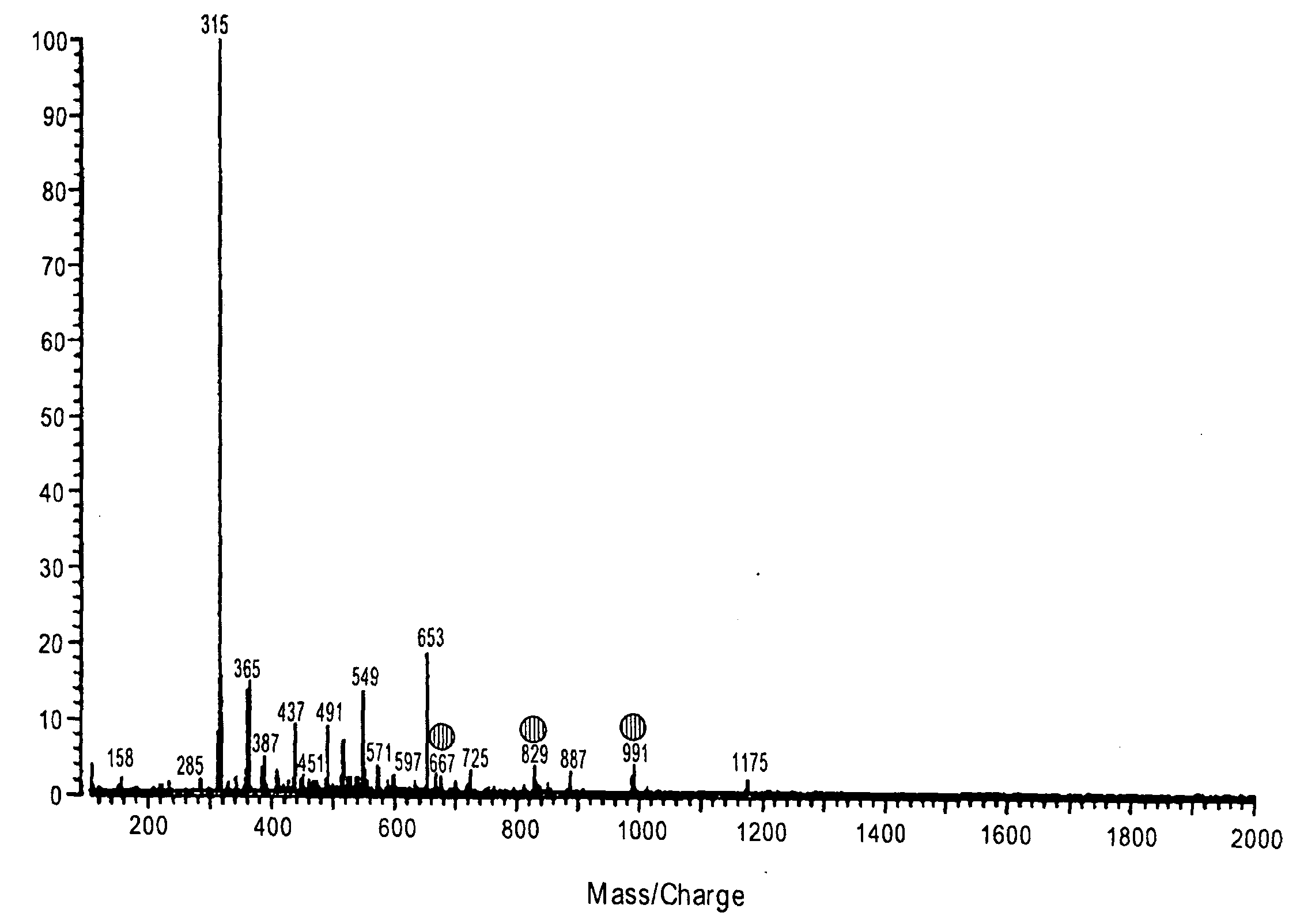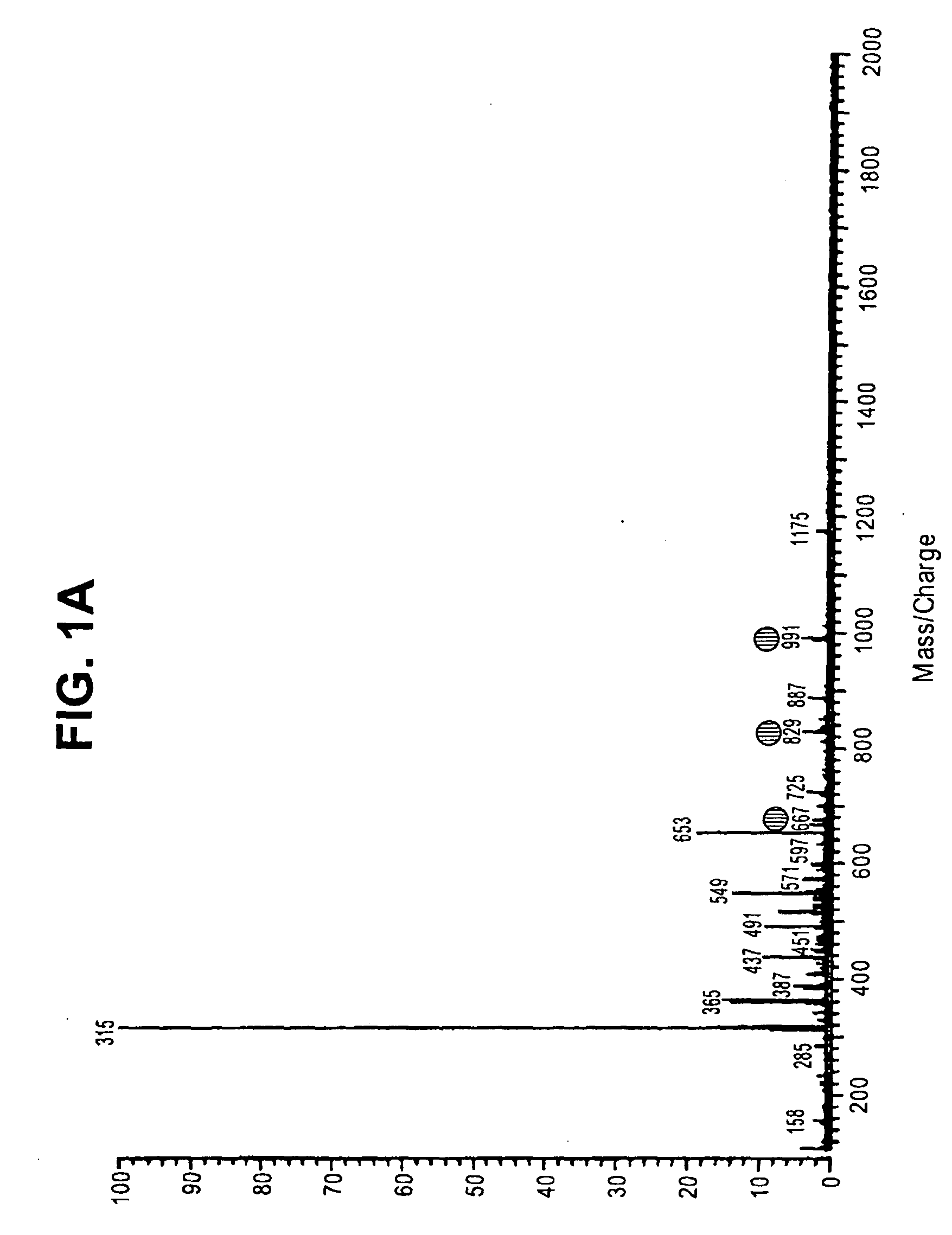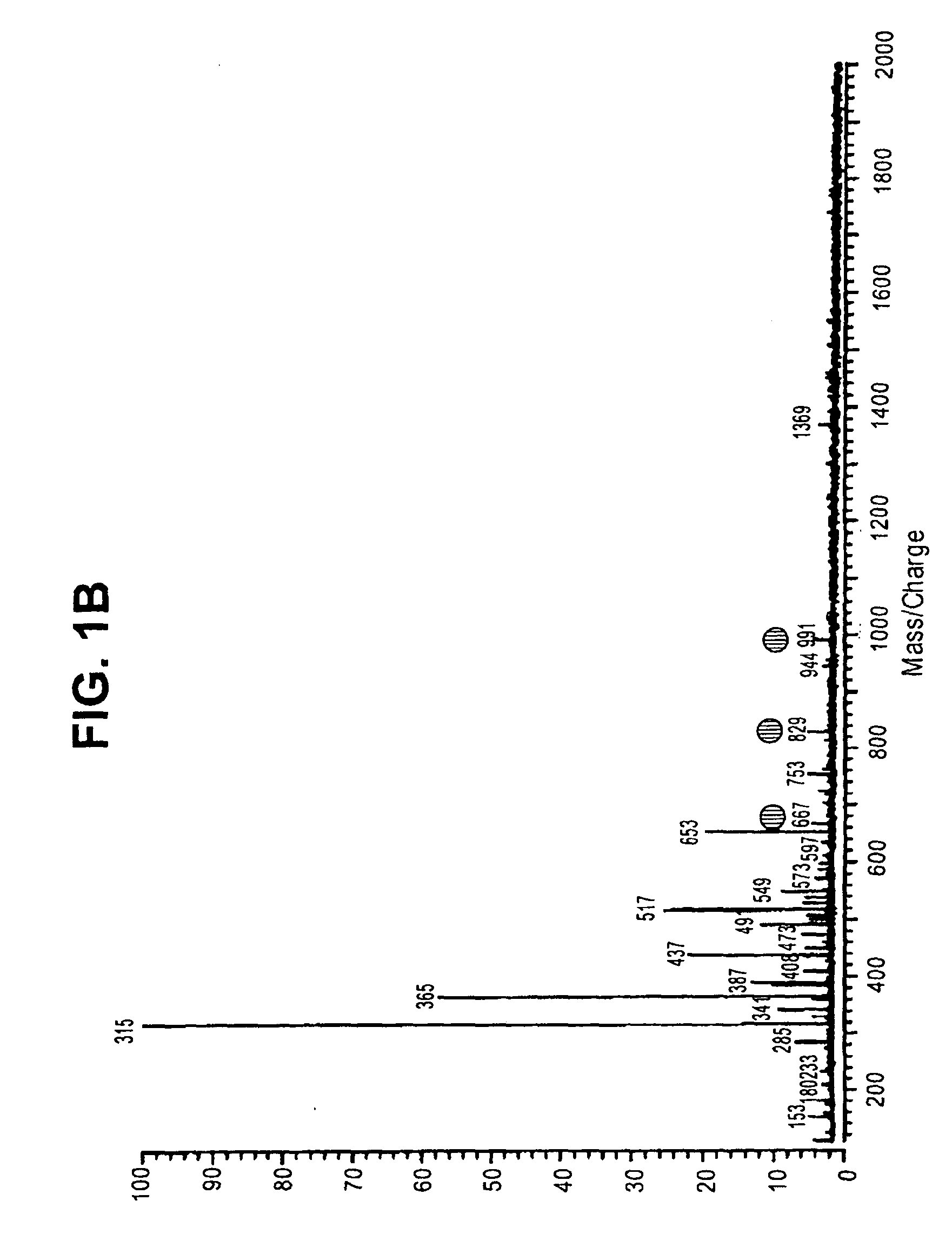Methods of oligosaccharide profiling for the detection of ocular rosacea
a technology of oligosaccharide and rosacea, which is applied in the preparation of sugar derivatives, peptides, enzymology, etc., can solve the problem of particularly challenging diagnosis of ocular rosacea
- Summary
- Abstract
- Description
- Claims
- Application Information
AI Technical Summary
Benefits of technology
Problems solved by technology
Method used
Image
Examples
example 1
Identification of Oligosaccharide Markers in Tear Fluid Samples from Patients with Ocular Rosacea
[0123]This example illustrates the extraction and mass spectrometry analysis of O-linked oligosaccharides from the tear fluid of individuals with ocular rosacea and normal controls.
Methods
[0124]Acquisition of Tear samples. Tears from 37 individuals (21 controls and 16 patients with ocular rosacea) were collected after conjunctival stimulation with a filter paper (Schirmer) strip, using a 10 μl microcapillary tube (Microcaps®; Drummond Scientific Co, Broomall, Pa.). Samples were collected from both eyes (right eye first) as described: 1) the paper strip was placed in the medial third of the inferior lid for 15-30 seconds and removed; 2) with the aid of a slit-lamp, the microcapillary tube was oriented horizontally and its tip was placed to touch the lacrimal meniscus until it was completely filled; and 3) samples from both eyes were immediately transferred to one siliconized low-retention...
example 2
Oligosaccharide Structure Determination
[0143]This example illustrates the determination of rudimentary and fine structures of the O-linked oligosaccharides identified from samples such as tear fluid.
[0144]The determination of the O-linked oligosaccharide structures is important for the identification of markers suitable for detecting or diagnosing inflammatory or infectious diseases such as ocular rosacea. As such, the present invention provides a method for O-linked oligosaccharide structure determination using tandem MS to obtain rudimentary structures followed by selective exoglycosidase digestion to verify those structures.
[0145]Exoglycosidases, e.g., in the form of glycosidase arrays, are commonly used for the structural elucidation of N-linked oligosaccharides. However, unlike N-linked oligosaccharides, where there is a known number of putative structures, O-linked oligosaccharides have significantly greater combinations of structures. As a result, the use of glycosidase array...
example 3
Statistical Analyses of Oligosaccharide Markers
[0148]This example illustrates the use of statistical analyses to identify oligosaccharide markers while controlling for false positives and to classify and / or predict inflammatory or infectious diseases based upon an oligosaccharide profile.
[0149]Statistical classification or prediction analysis of an oligosaccharide profile is similar to statistical analysis of genomic and proteomic data. As such, based upon the oligosaccharide marker profiles obtained from test and control samples, statistical classification / prediction analysis is performed to discriminate between these samples. As a non-limiting example, statistical learning methodologies such as dimension reduction combined with discriminant analysis (Nguyen et al., Bioinformatics, 18:39-50 (2002); Nguyen et al., Bioinformatics, 18:1216-1226 (2002)), support vector machine (Furey et al., Bionformatics, 16:906-914 (2000); Vapnik, Statistical Learning Theory, Wiley-Interscience: New ...
PUM
| Property | Measurement | Unit |
|---|---|---|
| Mass spectrum | aaaaa | aaaaa |
| Spectrum | aaaaa | aaaaa |
Abstract
Description
Claims
Application Information
 Login to View More
Login to View More - R&D
- Intellectual Property
- Life Sciences
- Materials
- Tech Scout
- Unparalleled Data Quality
- Higher Quality Content
- 60% Fewer Hallucinations
Browse by: Latest US Patents, China's latest patents, Technical Efficacy Thesaurus, Application Domain, Technology Topic, Popular Technical Reports.
© 2025 PatSnap. All rights reserved.Legal|Privacy policy|Modern Slavery Act Transparency Statement|Sitemap|About US| Contact US: help@patsnap.com



